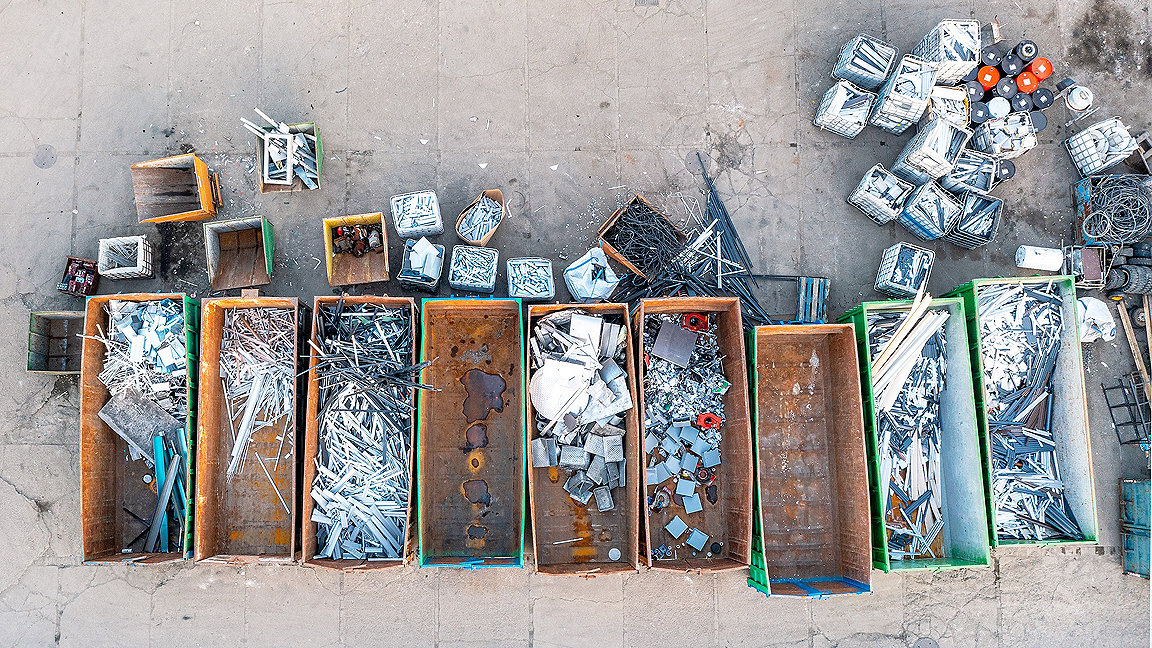
The most beneficial thing we can do as surveyors is to preserve and improve our existing buildings.
There are many reasons for this; but the main one is that new buildings on average are responsible for emitting a tonne of carbon per square metre, not to mention a litany of other negative social and environmental impacts too lengthy to relate here.
To put that in context, the average home emits between two and five tonnes of carbon a year once in operation. A 100m2 new-build house will therefore emit the same in its construction as it does in running for between 20 and 50 years. Keeping existing buildings thus results in fewer new ones, reducing our carbon emissions and other negative impacts.
Avoiding the impact of demolitions
From a financial perspective, it's clearly cheaper to follow current practice: once a building is demolished, strip out the metals and easily recovered fixtures and fittings, then landfill the plastics, and reduce the masonry or concrete to aggregate for low-quality backfill.
This recycling is marginally better than sending all demolition waste to landfill, but the usefulness of the fabric is then lost. The utility of a brick or a concrete beam is much higher as a whole unit or module, ready to be used again, than it is as aggregate.
Crucially, it is the effect of reuse on manufacture that links circular economic practice with decarbonisation. By reusing an old product, we don't need to manufacture a new one. The term for this is avoided impacts. We avoid the negative carbon impacts, social impacts and, in some ways, the financial impacts of producing new materials.
Demolition and crushing has negative impacts in itself, albeit mild ones – some diesel emissions from machinery as well as dust and noise. But the avoided impacts of keeping the utility of built fabric in use and thereby reducing the need for new manufacture and construction is huge.
Distinguishing operational and embodied carbon
The carbon associated with construction is split between embodied carbon – in the manufacture of building materials, and the construction and maintenance of actual buildings – and operational carbon – the emissions from energy generation. It's the difference between manufacturing and installing the boiler, and running the boiler.
Embodied carbon currently makes up 20% of the sector's emissions but this is expected to rise to 50% by 2035 – not because of an increase in its carbon intensity, but because operational emissions will be decarbonising.
Everything we can do to provide evidence that justifies the reuse of buildings – and if that's not possible, the reuse of parts of buildings – reduces these emissions, and is a key stage of the journey towards net zero.
Luckily, many surveyors already have exactly the skills for this. We survey buildings, plan maintenance, generate budgets, write specifications, tender measured-term contracts, and oversee works. This can be augmented by developing the skills to show how this work moves us along the path to net zero.
Redeploying surveyors' skills in calculation
RICS wrote the book on the calculation of carbon in the building life-cycle with 2017's Whole Life Carbon Assessment for the Built Environment, a new edition of which is now in preparation. By using this methodology and looking specifically at module D, we can show what carbon impacts can be avoided by reuse of materials arising from refurbishment and demolition, if used in the next project.
This sort of numbers work falls within the remit of quantity surveyors. While looking at the carbon impacts avoided in the circular use of recovered materials under module D is a difficult conceptual process, it's an essential area to focus on given its potential for carbon reduction and creating sustainable jobs.
We must look beyond our own individual projects – and indeed beyond our projected final account – to the projects around us to realise the benefits of the circular economy, breaking down silos between capital and revenue and one project and another. These are not easy changes to make; but they are essential.
The social impacts of the circular economy are harder to calculate of course. The obvious negative ones avoided are the health impacts of manufacturing construction products, not just in the UK but also abroad. We have too much visibility of supply chains now for unintended consequences to be acceptable; yet they're still often treated as being out of sight, out of mind.
On the positive side, remanufacture and refurbishment of construction materials is often carried out by social enterprises and charities, and presents a big opportunity for the third sector. Our not-for-profit consultancy EALA Impacts for instance provides a local supply chain list with our pre-demolition audit reports, so that the client knows potential partners for working in the circular economy.
Remanufacture and refurbishment jobs, as well as maintenance, are inherently stable and local, while also emitting much less carbon than those associated with new-build construction, so they should be seen as sustainable.
Our pre-demolition audit reports would be familiar to most surveyors: a table with an asset register down one side lists all the elements grouped in the same way as a planned preventative maintenance schedule. We quantify each element, then using environmental performance declarations (EPDs) or the ICE Database we can calculate the carbon avoided by reusing that element – that is, the carbon emissions prevented by not needing an equivalent replacement.
The ICE Database clearly shows, for instance, the difference between crushing masonry and keeping whole units. A reused concrete element avoids around 3kg of carbon per kilogram of new material, whereas turning it into aggregate prevents only 5g of carbon per kilogram of new material. Other dynamics are similarly clear. RICS is leading on an initiative to collate a Built Environment Carbon Database, which will only add to the evidence base.
Reusing materials not without challenges
That is not to say we're blasé about the obvious challenges. Since the advent of cement, our society has made buildings that don't come apart easily, while the petrochemical industry provided us with many more, including bitumen, mastics, adhesives, composite elements, which are all clear obstructions to the circular economy.
The intrinsically short lifespan of elements that degrade under sunlight means that few plastics make it through their first use, let alone on to a second one. So, recovery is tricky, but not impossible – Resource Rows in Copenhagen provides a positive example.
Then there's the economics of these decisions. The environmental damage of new materials is currently not included in their price when using the RICS whole-life carbon assessment methodology. Net-zero targets often avoid accounting for them as they count as scope 3 emissions; namely, all indirect emissions that occur in a company's value chain. And with new materials being factory-fresh and perfect as new, with BBA certificates and warranties, it's often impossible to include recovered elements in many projects.
The added cost of refurbishment or remanufacture, with the intrinsic variability of quality also introduces cost risk where we're not used to finding it. The conservation sector deals with this cost risk all the time, but many quantity surveyors have never acquired these skills. That said, when we have pushed, good professionals of this kind find a way to quantify and manage this risk.
Then there's certification, particularly where structure or fire is concerned – two areas where no one wants to introduce risk. Of course, the obvious example of validating existing fabric is already in front of us: the building survey.
Building surveyors, as well as conservation architects and engineers, regularly sign off on the performance of existing fabric, with appropriate caveats, and in place of a manufacturers' warranty we have our professionalism and our indemnity insurance. If we're going to reuse more materials, we'll need to rely more on the judgement and skill of professionals.
It can be done because it has to be
To an extent, we don't have a choice in this. Our current practice of extracting value from new buildings is unsustainable, since material throughput is inextricably linked with carbon emissions – emissions that almost every nation on the planet has agreed to eliminate – and other environmental degradation.
When you factor in many of the negative social impacts of this as well – from poor working practices in factories overseas to soulless new estates with no community facilities that force everyone to be a commuter – the social value gained by reinvigorating our existing fabric becomes irresistible.
Maintenance and refurbishment are endless jobs, which means that if we prioritised them it would help reduce the boom-and-bust cycles of new construction, instead creating local, stable, low-carbon jobs.
Surveyors – including quantity surveyors, building surveyors, and facilities managers – are central to decarbonising this part of our economy. We already have most of the skills; perhaps we just need to get better at presenting the evidence for what it is we can do.
'Our current practice of extracting value from new buildings is unsustainable'
Aythan Lewes MRICS is a director of EALA Impacts CIC
Contact Aythan: Email
Related competencies include: Inspection, Sustainability

